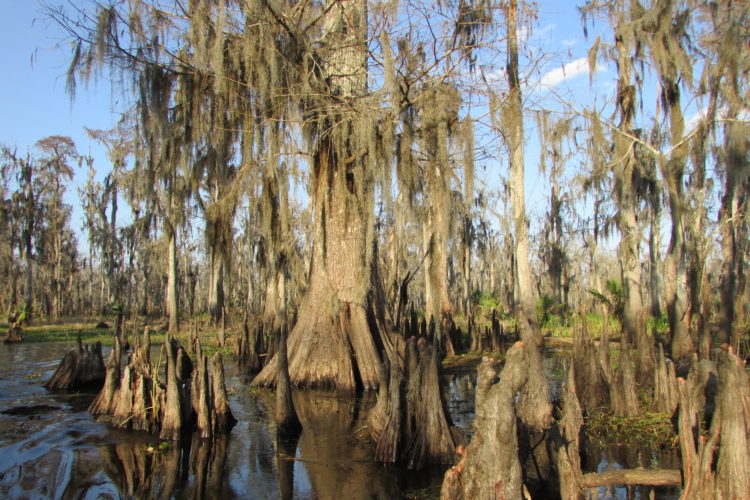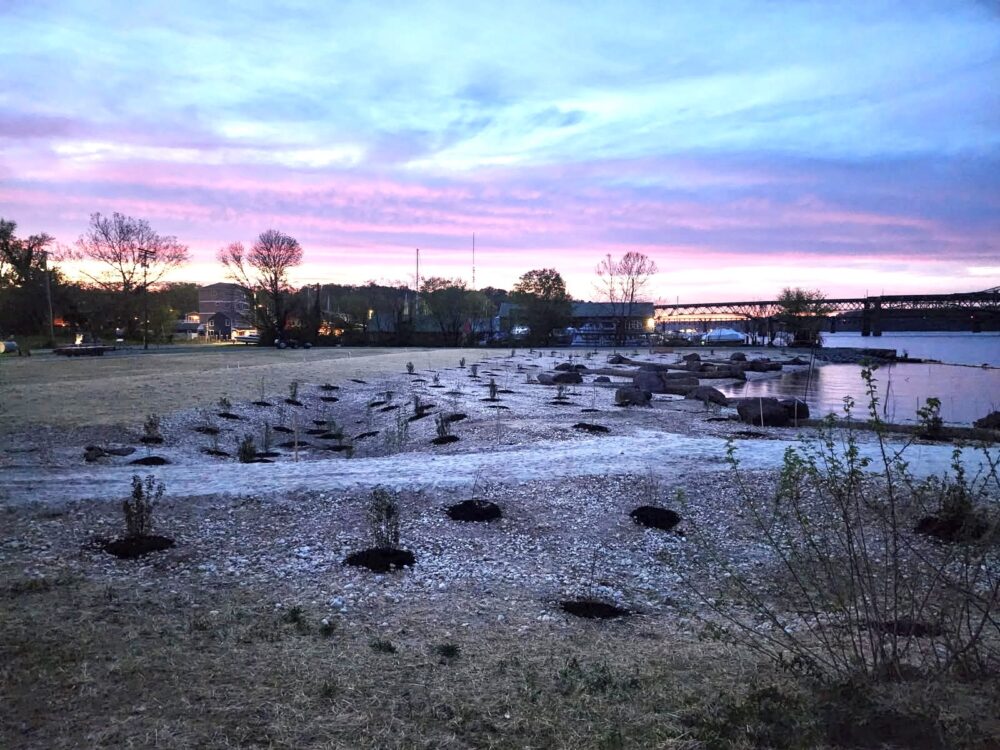We have much more to do and your continued support is needed now more than ever.
Win for Wildlife: Louisiana Approves Master Restoration Plan

The Mississippi River Delta in Louisiana is home to some of North America’s highest concentrations of wildlife. From the beloved Louisiana black bear to Louisiana’s answer to the flamingo, the roseate spoonbill, the state is home to an exciting array of wildlife. But the important wetland habitat for these and other creatures is in trouble. Sadly, the coastline is disappearing at a rate of one football field every hour. But all is not lost.
Last month, the Louisiana Legislature adopted the 2017 Coastal Master Plan, a blueprint for coastal restoration and protection activities. For thousands of years, the Mississippi River deposited rich sediment near its mouth in the warm waters of the Gulf of Mexico creating a productive delta that supports wildlife and communities. However, the natural process that created the delta has been deeply altered by human activities, laying the groundwork for an ecological collapse. A decade ago the state decided to work with federal agencies and local parishes to compile various restoration plans to create a master list, the Coastal Master Plan.
Louisianians understand the importance of their coast to wildlife, people, and our nation’s economy. They take the issue very seriously. Louisiana’s master plan is the first of its kind to be developed by the Gulf states and is now on the cutting edge of what coastal states can do to address a changing coastline. By law, it is updated every five years to reflect the best available science. The third rendition passed by the legislature in June prioritizes a billion dollars every year for the next 50 years towards coastal restoration and risk reduction in order to address the state’s coastal land loss.

The master plan, developed by the Louisiana Coastal Protection and Restoration Authority (CPRA), uses ever-evolving scientific models to take a comprehensive look at what can realistically be done by the state to address the environmental challenges on the coast, especially sea level rise driven by climate change. “The 2017 Master Plan is grounded in tested science and engineering, and, due to the Deepwater Horizon settlements, fifteen years of funding is available for restoration. Now is the time to get critical projects underway that will restore the natural system that built the delta over thousands of years. Each moment of delay decreases available habitat and increases the rate of future loss,” said David Muth, NWF’s Director of Gulf restoration and member of CPRA’s Framework Development Team for the master plan.
Sediment, the sands, silts and clay of the Mississippi River, is the critical ingredient to coastal restoration efforts in Louisiana. A cornerstone of the 2017 plan is sediment diversions, restoration projects that harness the power of the strongest tool available to build and sustain land – the Mississippi River – by strategically depositing freshwater and sediment into nearby starving wetlands during high river flow peaks. These peaks typically occur in the spring from rainfall and snowmelt throughout the drainage basin in the northern states. As the river flow rises, the amount of sediment carried by the river also generally increases. Diverting this large amount of sediment into sediment-starved wetlands is necessary for restoring the coast.
But sediment diversions are just one component of an array of coordinated and complementary restoration projects, all working together to build and sustain new habitat. Barrier island restoration, hydrologic restoration, marsh creation, oyster reef restoration and shoreline protection are all part of the strategy to deliver maximum benefits to the state’s coast. The suite of projects outlined in the 2017 Coastal Master Plan has received widespread support from a diverse array of coastal advocates, stakeholders, parish officials and communities.
Louisiana is a haven for wildlife, teeming with species like alligators, roseate spoonbills, otters, blue crab, speckled trout, black bears—a coast worth restoring. But as the coastline moves inland, it also jeopardizes nationally important economic assets and storm protection for coastal communities. NWF’s team in Louisiana is proud to be part of the major effort to raise awareness about the land loss problems and to have helped ensure broad stakeholder support for the 2017 Coastal Master Plan. A recent poll revealed that an overwhelming majority of Louisiana voters (88 percent) wanted their legislators to approve the master plan, and 97 percent of respondents recognized the value of our Louisiana’s coastal areas and wetlands.






















